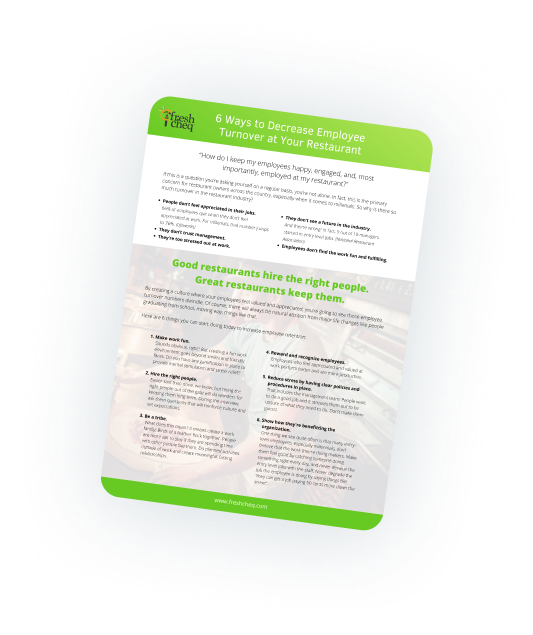Here are FreshCheq, we've been in the restaurant business as a family for almost three decades. During that time, we’ve put in a lot of work to create good standards and make sure that they stick.
Among the most important of these are your cooking and cooling logs. Here are three tips to help you ensure safe food temperatures:
1. Do Them at the Same Time Every Day
As we've outlined before, it's very important to have processes in place. So set reminders to make sure that you're getting them done at the same time every day. It needs to be a habit and obviously needs to be done before you serve your food to your guests. It doesn't do any good if you serve the food and then follow the temperature processes.
2. Split Them Up
Most kitchens have multiple sections within the kitchens, so split up the responsibilities for the logs and help get them done quicker. One of the biggest reasons that food safety logs don't get done is because of the time it takes to do them. Ideally, you’re getting them done right before you serve the food.
However, if you suddenly get an unexpected rush of customers and you're busy, it can be difficult to get them done because you're swamped and you don't want to take the time. So, if you're able to split them up and get multiple people involved, you can reduce the time that it will take to get them done. And, when you have multiple people involved in the process, more people will be aware of the need for proper food safety logs!
3. Keep Your Reports for At Least 60 Days
If you're recording your logs digitally, that's done automatically of course. However, if you're doing it on paper, you want to make sure you're keeping them for at least 60 days. Health inspectors and auditors typically ask to see the last 30 days within your reports. But, if someone gets sick and there's a food safety case against you things can change. It may take a while to put everything together and you want to make sure that you're covered in that scenario.



